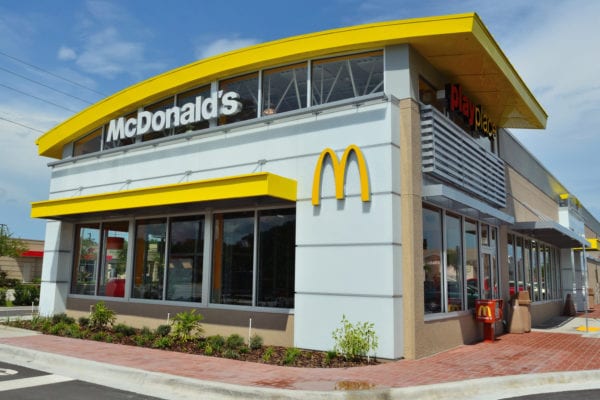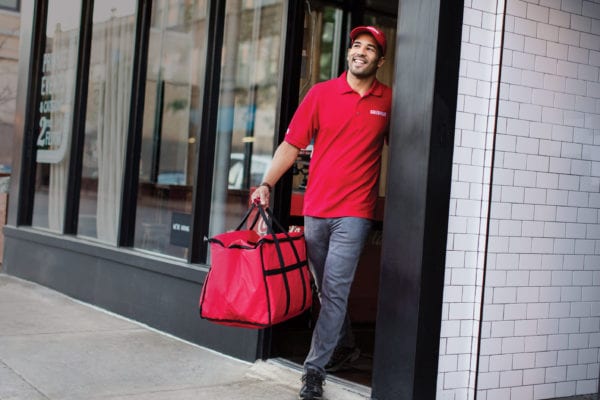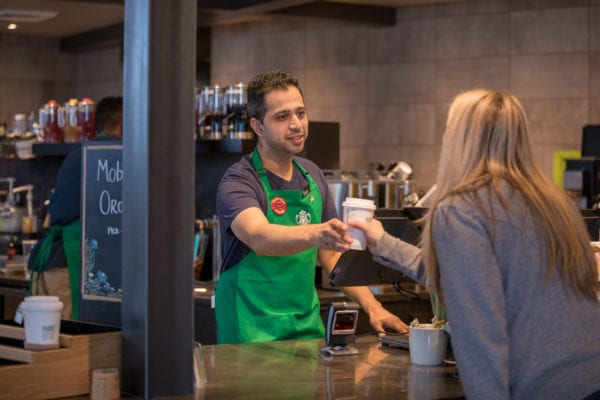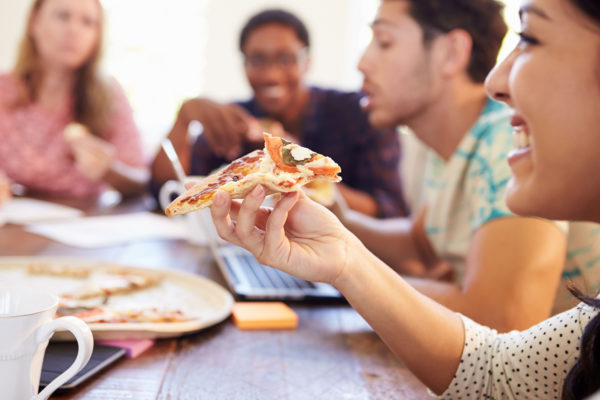DELIVERY
UberEats Debuts Standalone App
After a year of offering UberEats in its car service app, Uber has launched its first standalone app for UberEats in Toronto. Wired does a great job of detailing the new app and the reasoning behind the app. The piece also notes that breaking into food delivery will be significantly different than success in the transportation business — mainly because most cities now have several mobile app options for food delivery.
Uber has a solution to this, though — and it’s an interesting one: instead of giving customers every delivery food option possible, UberEats hones its focus to just five dishes per day. By eliminating the paradox of choice, UberEats is banking on a more excited, more engaged customer base. The theory: people, couples, families are overwhelmed by choices when choosing a delivery option which sometimes makes food delivery far more stressful than it needs to be. (I can tell you that is the case in this house.) By offering this kind of curated menu, the app becomes a serious convenience when you want to have dinner and you want to have it fast but you have no idea what, exactly, you want to have.
This is also notable in that it mostly goes against the delivery app trend. As more companies emerge, their focus tends to be on growth and inclusion: more restaurants! More different types of cuisine! More options! This makes much sense and I’m interested to watch it play out.
SPEAKING OF
How One Delivery App Broke into a Crowded Market
In a different yet sort-of similar story, here’s Eat24, which was acquired by Yelp earlier this year. The company, profiled briefly in Harvard Business Review, is a direct competitor to the legions of delivery apps available in cities and towns across the US. According to the piece, Eat24 founders did a couple things differently: they went after “undesirable customers” and they went after “undesirable media.”
Targeting restaurants who might be a little less-than tech savvy, they offered fax machines instead. They went door to door to offer a free website and ordering system. And they didn’t invoice restaurants for amounts less than $10, absorbing (sort of) small losses in a gesture of goodwill. Similarly, they stopped advertising in the popular places (Facebook is mentioned here) in favor of…. porn sites. Seriously! Apparently this is the place to advertise if you want eyeballs, because the exposure was 200 percent higher than it was on the Google and Facebook platforms. (This all makes sense, still giggle-inducing.)
While this seems like more of a business story than a restaurant+technology story, the takeaway is similarly interesting to that of the story above and makes me realize that there’s probably a market for more than just a couple of delivery apps. I’m interested to see how they continue to set themselves apart and develop.
AT-HOME
What’s the Problem with Meal Kits? Trash.
Hey, hey, more delivery! The internet is ubiquitous, e-commerce is commonplace, and a whole lot of people now believe that it really is easier to order everything online. Now, this also includes groceries and meals… even those you prepare yourself. The last year has seen the growth of more than a few meal delivery companies that send you pre-measured fresh ingredients with a recipe and let you do the prep work. These meal kits are thoughtful, delicious, and incredibly gratifying. Somehow, they seem to require just the right amount of work to make you feel like you cooked dinner at home without having the serious stress that’s sometimes involved with cooking dinner at home. The problem: all of these pre-measured ingredients often come wrapped in a good amount of trash.
Buzzfeed recently published what a week of Blue Apron waste looks like, and it’s notable. For its part, Blue Apron does offer resources that inform customers how to recycle packaging, but it’s often less than convenient as much of the plastic can’t go directly into an at-home recycling bin.
This isn’t just a food thing… I’m among the guilty with an embarrassing amount of Amazon boxes piled up in the garage waiting for the recycling truck. The balance between food safety and food freshness and responsible environmentalism is an interesting one, and one that I know is on the minds of people at these meal delivery operations. Interesting because they’re reliant on a different type of technology: packaging technology that can be both eco-friendly and food-safe.
TIPS
Resy’s Tipping Survey Results
A few weeks ago, Resy asked for your opinion about the state of tipping in restaurants, and after polling 2,000 diners, published the results. They cover a good spectrum: from understanding the purpose of a tip to thoughts and feelings about eliminating tipping in favor of higher menu prices. One especially interesting included statistic: when choosing between two otherwise comparable restaurants, respondents would pick the service-included option about 60 percent of the time.
Digestifs
- The (awesome!) food tech holiday gift guide — Food+Tech Connect
- Jacques Pepin’s food memories — New York Times
- The 21 best longform food stories of 2015 — Eater




